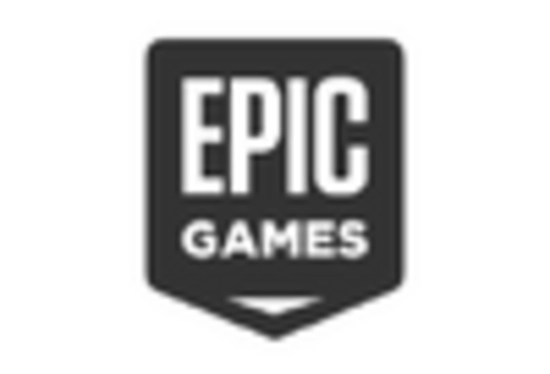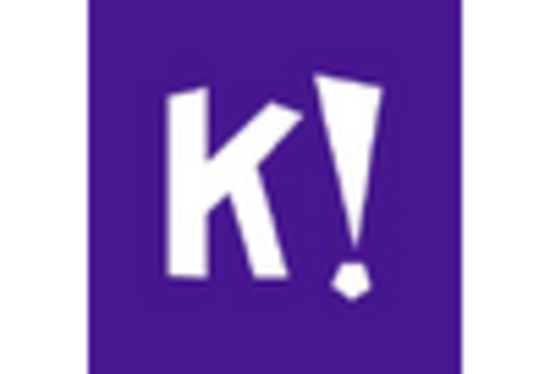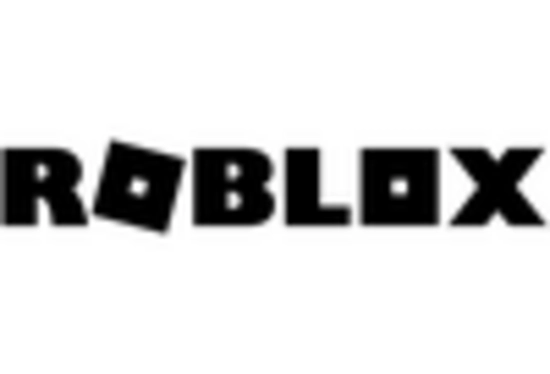The Online Gaming Edutainment Market is currently characterized by a dynamic competitive landscape, driven by technological advancements and an increasing demand for interactive learning experiences. Major players such as Kahoot! (NO), Duolingo (US), and Roblox Corporation (US) are at the forefront, each adopting distinct strategies to enhance their market presence. Kahoot! (NO) focuses on gamifying education through engaging quizzes and interactive content, while Duolingo (US) leverages its language-learning platform to incorporate game-like elements that promote user engagement. Roblox Corporation (US), on the other hand, emphasizes user-generated content, allowing players to create and share their own educational games, thereby fostering a community-driven approach to learning. Collectively, these strategies contribute to a competitive environment that prioritizes innovation and user engagement.
In terms of business tactics, companies are increasingly localizing their offerings to cater to diverse educational needs across different regions. This localization, coupled with supply chain optimization, enables firms to deliver tailored content that resonates with local audiences. The market structure appears moderately fragmented, with a mix of established players and emerging startups vying for market share. The collective influence of these key players shapes the competitive dynamics, as they continuously adapt to changing consumer preferences and technological advancements.
In September 2025, Kahoot! (NO) announced a strategic partnership with a leading educational institution to develop a new suite of interactive learning tools aimed at enhancing STEM education. This collaboration is likely to bolster Kahoot!'s position in the market by expanding its content offerings and tapping into the institution's extensive network of educators. Such partnerships may serve to enhance credibility and attract a broader user base, thereby reinforcing Kahoot!'s competitive edge.
In August 2025, Duolingo (US) launched a new feature that integrates augmented reality (AR) into its language-learning app, allowing users to practice vocabulary in real-world contexts. This innovative approach not only enhances user engagement but also positions Duolingo as a pioneer in the integration of AR technology within educational gaming. The strategic importance of this move lies in its potential to attract tech-savvy learners and differentiate Duolingo from competitors who have yet to adopt such immersive technologies.
In July 2025, Roblox Corporation (US) expanded its educational initiatives by introducing a dedicated platform for educators to create and share learning experiences within the Roblox ecosystem. This initiative is indicative of Roblox's commitment to fostering educational content and community engagement. By empowering educators to utilize its platform, Roblox is likely to enhance its value proposition and solidify its role as a leader in the edutainment space.
As of October 2025, current competitive trends in the Online Gaming Edutainment Market are heavily influenced by digitalization, sustainability, and the integration of artificial intelligence. Strategic alliances are increasingly shaping the landscape, as companies recognize the value of collaboration in driving innovation and expanding their reach. Looking ahead, competitive differentiation is expected to evolve, with a notable shift from price-based competition towards a focus on innovation, technology, and supply chain reliability. This transition underscores the importance of creating unique, engaging educational experiences that resonate with users, ultimately defining the future of the market.


















Leave a Comment